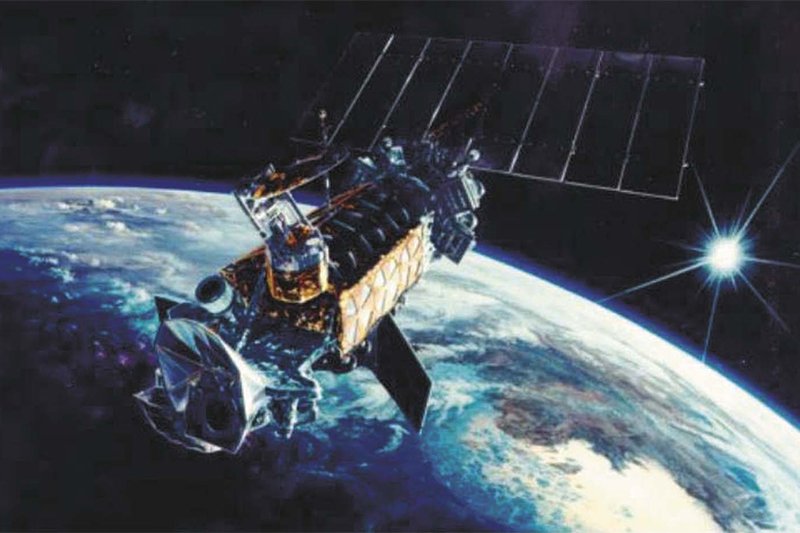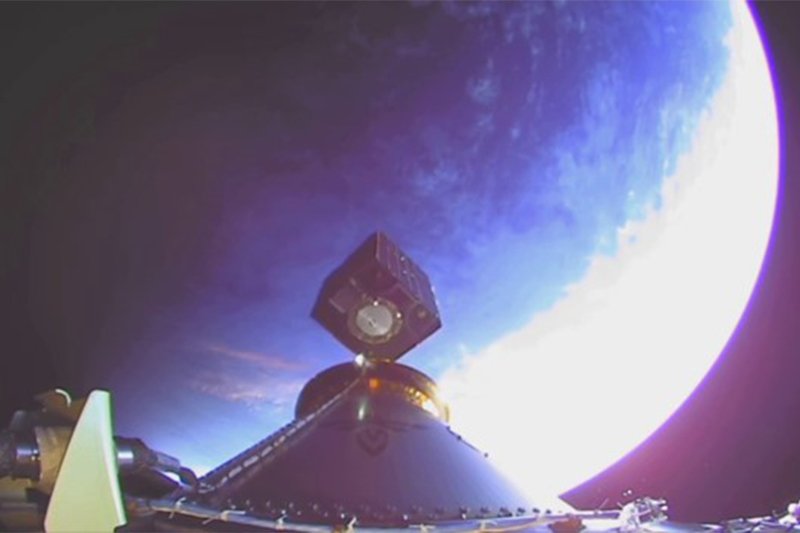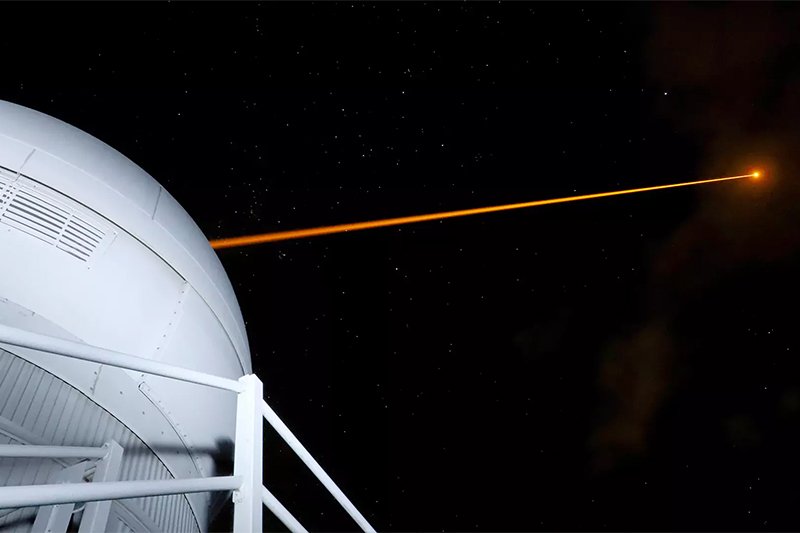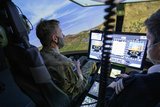Space Dominance: How Laser Technologies are Reshaping Modern Military Operations
A US Space Force master sergeant oversees a capstone project inside the Multi-Domain Lab at the Air Force Academy, in Colorado, in May. (Photo: US Air Force)
Brought to you in partnership with EOS
As militaries prepare for a future of multi-domain operations (MDO), there are new demands for seamless communications and comprehensive situational awareness across all domains. High-energy lasers and precision optics will be crucial, boosting speed, functionality – and security.
Space has rapidly expanded as an operational domain for militaries, leading to the foundation of space commands in the US and beyond. As assets in land, sea, air, cyber and space continue to integrate – maximising capabilities across domains – space will play an increasingly dominant role.
Space-Based Capabilities: Enhancing Military Functions
Juliana Suess, research fellow for space security at the Royal United Services Institute (RUSI), pointed to a wide range of functions that now depend on space-based capabilities. For militaries, the first focus is satellite communications, even in areas where this may be tricky for other forms of communication: on an aircraft or a ship, for instance.
Second, she pointed to positioning, navigation and timing (PNT) systems, essentially ‘the military version of GPS – there’s now a couple of different constellations that do that’.
Third, she highlighted intelligence, surveillance and reconnaissance (ISR) applications. A key shift here is that much of the data previously gathered from airborne surveillance using fixed-wing aircraft has been steadily progressing to being space-borne.
And finally, Suess pointed to the potential for missile early warning, the ability ‘to track missiles as they take off’.
The Strategic Importance of Space Technology
Ben Greene, founder and chief innovation officer of Electro Optic Systems (EOS), highlights how space warfare capabilities are primarily about enabling, enhancing, and accelerating other domain capabilities.
‘Using space for communications, navigation, creating safer zones to fly your missiles through to hit the target more effectively, logistics control, and so on. Space is the domain where you exercise dominance so that you can leverage your other forces better,’ Greene explains.

The importance of space-based sensors and systems was starkly illustrated in February 2022, when Ukraine was able to monitor Russia’s military build-up and subsequent invasion.
Theodora Ogden, a Space Policy Analyst at RAND, said Ukraine has continued to rely on high-resolution imagery, including synthetic aperture radar and PNT and SATCOM systems such as Starlink.
‘Russia, on the other hand, sees controlling access to space-based information as key to securing strategic advantage through increased situational awareness for long-range military operations and operating across the various domains. Russia’s use of disinformation is also firmly ingrained in its approach to hybrid warfare,’ Ogden explained to the UK House of Lords International Relations and Defence Committee on 17 April.
‘However, Ukraine-based Earth observation and ISR capabilities often seem to override Russian attempts to control the information environment by revealing the truth on the ground.’
Key Technologies in Space Operations
Space domain awareness involves monitoring and understanding the environment in space to ensure freedom of action. Technologies such as high-fidelity sensors provide unmatched positioning accuracy of objects in various orbital regimes, from low-Earth orbit (LEO) to geostationary orbit (GEO). This precision tracking enables better intelligence and space control capabilities.
Greene notes that the ability to track small, dim, and distant objects is crucial. ‘For example, our network of taskable sensors is interoperable with other networks and operationally tested, providing a comprehensive understanding of the operational environment.’

Satellite laser ranging (SLR) is a technique for tracking satellites in orbit with exceptional precision. This technology measures movements down to the millimetre, which is crucial for determining satellite orbits accurately. SLR stations equipped with state-of-the-art lasers, timing systems, and automated software enhance the precision of global coordinate systems such as GPS.
Greene highlights the importance of SLR: ‘This technique is essential in geodesy, environmental monitoring, and establishing accurate global coordinate systems.’
Meanwhile, the increasing risk of catastrophic collisions in space due to space debris is a growing concern. High-energy laser technology can illuminate debris, altering its orbit to prevent collisions with vital space assets. This ground-based laser debris collision avoidance system is cost-effective and does not require a launch, making it a practical solution for space sustainability.
Greene explains, ‘Lasers play a key role in both tracking and mitigating space debris. They are particularly effective for objects with a large surface area relative to their mass, such as rocket bodies or panels from spacecraft.’

The Crucial Role of Lasers in Modern Warfare
Given their utility in communications, PNT, and beyond, lasers will be vital in modern military operations. They can track and pinpoint assets across the battlespace, building a reliable operational picture. Lasers also enhance MDO by integrating systems of enhanced sensors, laser range finders, and more.
Greene underscores the importance of high-energy lasers and precision optics: ‘Most military communications worldwide will be optical within the next decade, and that will be laser-based. Countermeasures for jamming and interference will also rely on lasers.’
With growing cyber threats and other dangers in electronic warfare, fully protected communications are vital. Lasers offer a secure communication method that cannot be intercepted in the same way as other technologies. Greene emphasises, ‘Wideband comms systems for national security will be optically based, and many of them already are.’
Lasers also play a crucial role in dazzling and disabling sensors and reconnaissance satellites, ensuring the integrity of military operations and preventing adversaries from gaining strategic advantages.
The strategic use of space and advancements in laser technology will profoundly shape the future battlespace. As nations continue to explore the capabilities of these technologies, the balance between cost, technology, and interoperability will define their success in securing national and allied interests.
- To learn more about The New Battlefield: Space Defence and the Future of Military Operations, attend the panel session during Eurosatory at 3 pm on Monday, 17 June.
More from Studio
-
![Intelligence advantage: How real-time GEOINT is reshaping military decision-making (Studio)]()
Intelligence advantage: How real-time GEOINT is reshaping military decision-making (Studio)
In today’s contested operational environment, adaptability is key. The new Geospatial-Intelligence as a Service (GEO IaaS) solution from Fujitsu and MAIAR empowers militaries by enabling intelligence advantage, combining advanced technology with human expertise to deliver actionable insights.
-
![Training Together: Unlocking Educational Excellence through Military and Industry Collaboration (Studio)]()
Training Together: Unlocking Educational Excellence through Military and Industry Collaboration (Studio)
Military training is ultimately about people. At Capita, training programmes are built on close engagement with partners, delivering an educational approach that can adapt to individual needs, cultivate leadership – and drive wider cultural change.
-
![Enhancing Military Training Through Digital Technology (Studio)]()
Enhancing Military Training Through Digital Technology (Studio)
Digital technologies offer huge opportunities for defence training. However, militaries must adopt an agile approach, placing the needs of their organisations and personnel at the centre of their efforts.
-
![Layered Defence: How new technologies are enhancing armoured vehicle survivability and manoeuvrability (Studio)]()
Layered Defence: How new technologies are enhancing armoured vehicle survivability and manoeuvrability (Studio)
As modern threats evolve, armoured fighting vehicles face a new era of challenges, from loitering munitions to kinetic energy projectiles. Advances in active, passive, and reactive protection systems are crucial to ensuring battlefield dominance, freedom of manouver and vehicle survivability.
-
![Seizing the Future: The Imperative for Militaries to Master AI and Forge Strategic Alliances]()
Seizing the Future: The Imperative for Militaries to Master AI and Forge Strategic Alliances
The current pace of innovation demands a new strategy for success, focusing on developing technology to meet specific defence goals and ensuring collaborative efforts.
-
![Turning the Hiroshima Accord into Action: Enhancing UK-Japan Defence Collaboration (Studio)]()
Turning the Hiroshima Accord into Action: Enhancing UK-Japan Defence Collaboration (Studio)
The UK-Japan strategic partnership leverages joint defence initiatives, advanced technologies, and SME integration to enhance military capabilities, foster innovation, and ensure regional and global stability through collective action and effective project management.


























